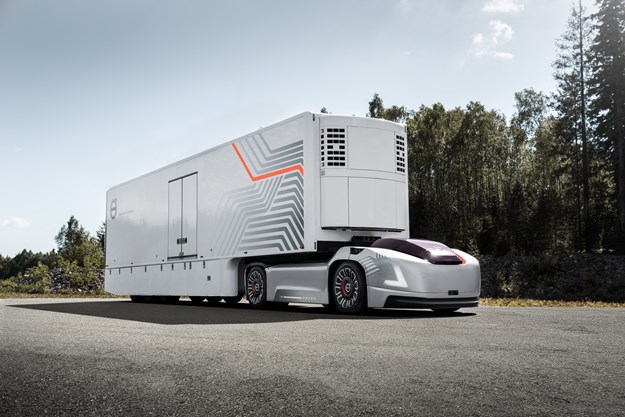Volvo Trucks is combining automation, connectivity and electromobility in a new vehicle operated via a cloud-based service
Volvo Trucks has presented a new transport solution from its headquarters in Gothenburg, Sweden, consisting of autonomous electric commercial vehicles which it says can contribute to more efficient, safer and cleaner transportation.
According to Volvo Trucks, its long-term goal is to offer companies that need continuous transport services between fixed hubs a complement to today’s offerings.
The organisation says growing world population and increasing urbanisation are leading to significant challenges to solve environmental issues such as congestion, pollution and noise. Rising consumption, the fast growth of e-commerce and the wide-spread shortage of drivers put higher demands on efficient transport solutions.
“The full potential of the transport industry is yet to be seen. Everything suggests that the global need for transportation will continue to significantly increase in the coming decade,” says Claes Nilsson, president Volvo Trucks.
“If we are to meet this demand in a sustainable and efficient way, we must find new solutions.
“In order to secure a smoothly functioning goods flow system we also need to exploit existing infrastructure better than currently.”
 |
|
Mikael Karlsson, vice president autonomous solutions at Volvo Trucks
|
Volvo Trucks claims its future transport solution is intended to be used for regular and repetitive tasks characterised by relatively short distances, large volumes of goods and high delivery precision. Transports between logistic hubs are typical examples, but additional use cases can also be applicable.
“Our system can be seen as an extension of the advanced logistics solutions that many industries already apply today,” explains Mikael Karlsson, vice president autonomous solutions.
“Since we use autonomous vehicles with no exhaust emissions and low noise, their operation can take place at any time of day or night.
“The solution utilises existing road infrastructure and load carriers, making it easier to recoup costs and allowing for integration with existing operations.
“Obviously, this will affect drivers in these applications, but in the big picture we foresee an increased need for skilled drivers,” Karlsson points out.
“I strongly believe that technology drives prosperity and takes society forward.”
The operation is handled by autonomous electric vehicles linked to a cloud service and a transport control centre. The vehicles are equipped with sophisticated systems for autonomous driving and are designed to locate their current position to within centimetres, monitor in detail and analyse what is happening with other road users, and then respond with high accuracy.
The transport control centre continuously monitors the progress of the transport and keeps an accurate watch of each vehicle’s position, the batteries’ charge, load content, service requirements and a number of other parameters. As with an industrial production process, speed and progress are tailored to avoid unnecessary waiting and to increase delivery precision. In this way it will be possible to minimise waste in the form of buffer stocks, and increase availability. Vehicles that operate on the same route cooperate to create optimal flow.


